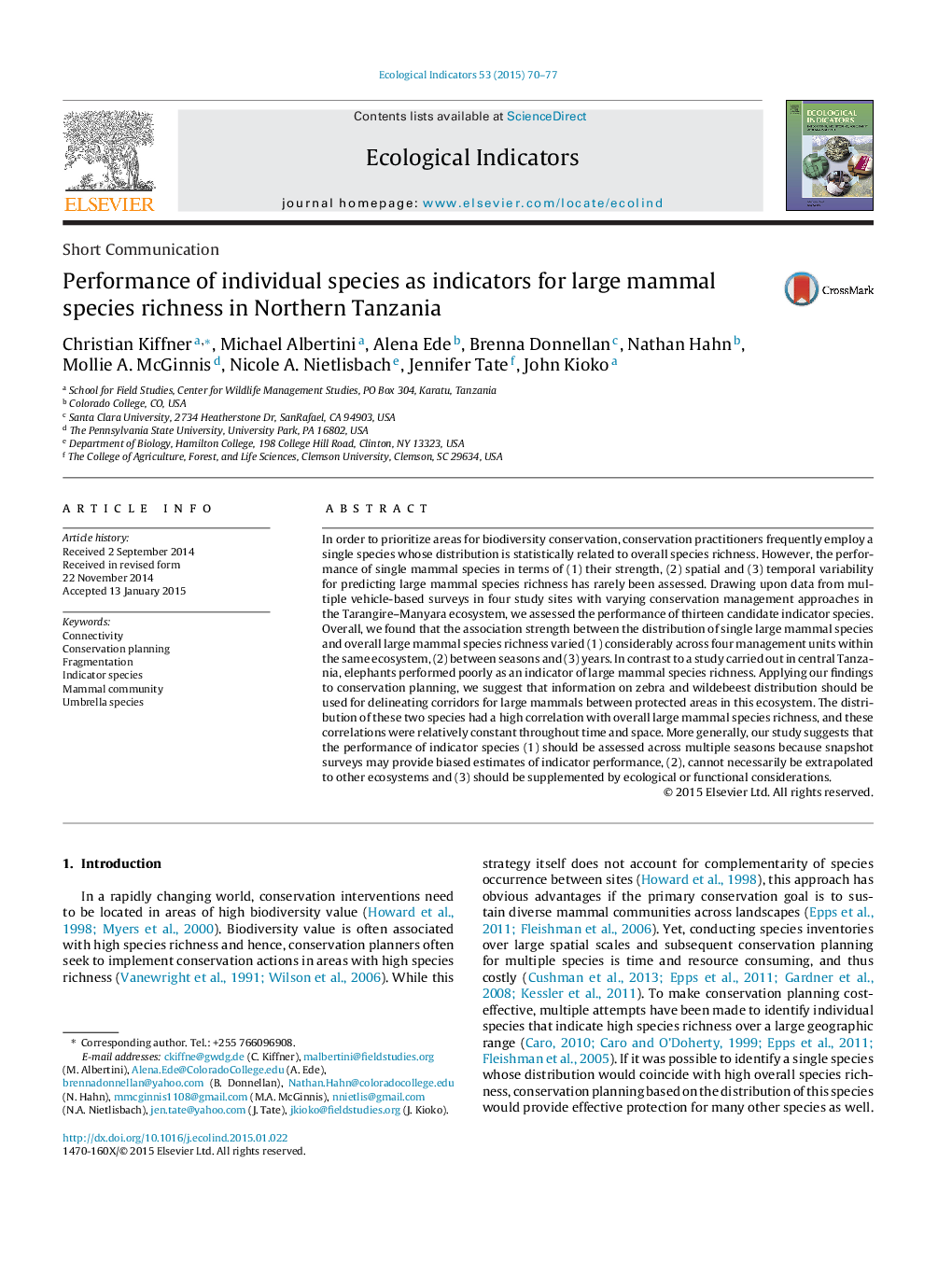| Article ID | Journal | Published Year | Pages | File Type |
|---|---|---|---|---|
| 6294414 | Ecological Indicators | 2015 | 8 Pages |
Abstract
In order to prioritize areas for biodiversity conservation, conservation practitioners frequently employ a single species whose distribution is statistically related to overall species richness. However, the performance of single mammal species in terms of (1) their strength, (2) spatial and (3) temporal variability for predicting large mammal species richness has rarely been assessed. Drawing upon data from multiple vehicle-based surveys in four study sites with varying conservation management approaches in the Tarangire-Manyara ecosystem, we assessed the performance of thirteen candidate indicator species. Overall, we found that the association strength between the distribution of single large mammal species and overall large mammal species richness varied (1) considerably across four management units within the same ecosystem, (2) between seasons and (3) years. In contrast to a study carried out in central Tanzania, elephants performed poorly as an indicator of large mammal species richness. Applying our findings to conservation planning, we suggest that information on zebra and wildebeest distribution should be used for delineating corridors for large mammals between protected areas in this ecosystem. The distribution of these two species had a high correlation with overall large mammal species richness, and these correlations were relatively constant throughout time and space. More generally, our study suggests that the performance of indicator species (1) should be assessed across multiple seasons because snapshot surveys may provide biased estimates of indicator performance, (2), cannot necessarily be extrapolated to other ecosystems and (3) should be supplemented by ecological or functional considerations.
Related Topics
Life Sciences
Agricultural and Biological Sciences
Ecology, Evolution, Behavior and Systematics
Authors
Christian Kiffner, Michael Albertini, Alena Ede, Brenna Donnellan, Nathan Hahn, Mollie A. McGinnis, Nicole A. Nietlisbach, Jennifer Tate, John Kioko,
